Yours truly is back at it again this year at the Florida Audio Expo in Tampa, this time in an official capacity as a writer for Part-time Audiophile. Here is the first taste of show coverage, with lots more to come:
![]()
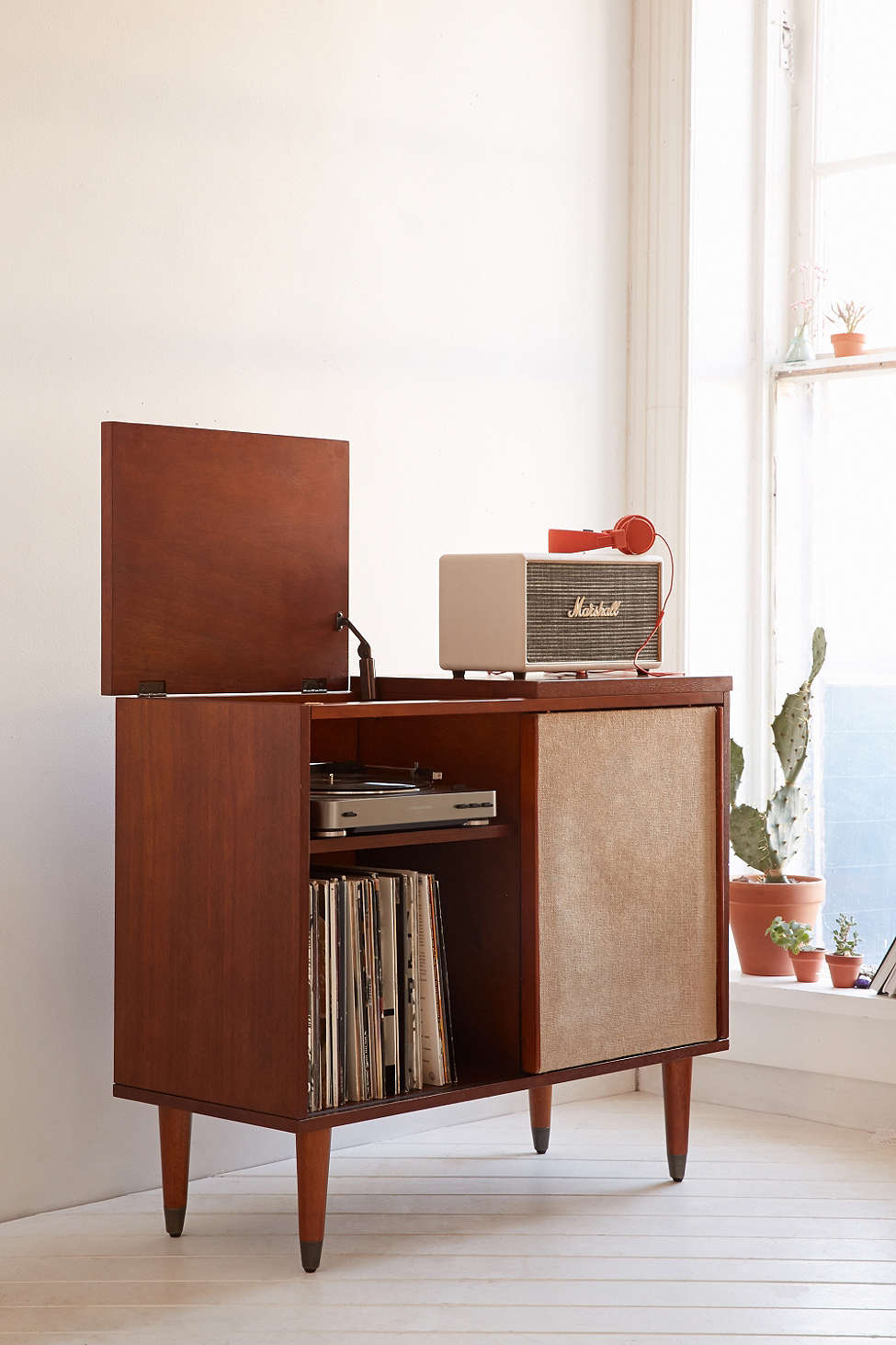
Yours truly is back at it again this year at the Florida Audio Expo in Tampa, this time in an official capacity as a writer for Part-time Audiophile. Here is the first taste of show coverage, with lots more to come:
![]()
Ladies and Gents, yours truly will be traveling to Tampa this upcoming weekend to cover the Florida Audio Expo 2022, or FLAX. There will be some coverage info here, but the majority of it will be for Part-time Audiophile. Here is the FLAX website for more info. I’m particularly interested in hearing the Acora Acoustics offerings for the first time, as well as Fern & Roby’s Raven III single driver floorstander. Stay tuned!
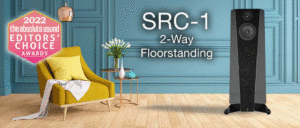
![]()
Us too! However, Twitter and Instagram have been more active in the past year than updating this page; stay tuned for some new reviews and until then follow us on the aforementioned.
![]()
One may be asking “Why is he reviewing a phone? Isn’t that what CNet is for?” Well, here’s the thing. I’ve been an Apple fanboy for a very long time, and as far as MacBooks go that’s probably not going to change any time soon. That being said, that the iPhone is an underwhelming audiophile device cannot be overstated. They’ve deleted the 3.5mm jack, but have not bothered to upgrade their Bluetooth Codex to AptX or AptX HD, and to my knowledge have never entertained the idea of hi-res streaming off iTunes.

What were we to do? There are a few workarounds; specifically, I used a hi-res app from Onkyo called HF Player, then through the lightning port used a camera connection kit (CCK) cord to attach an AudioQuest DragonFly Red dongle-DAC/HPA. The sound of this setup was pretty darn good, and worked well for travelling. Then, during one of the iPhone updates, it stopped supporting the relatively slim CCK cord, forcing one to upgrade to a much bulkier connection that for some baffling reason had a full-size SD card port in addition to a USB. Not so sleek anymore, back to the days of dongle-DACs that made the user look like a high school AV club reject (Think Geek Out with flesh-melting temperatures.)
So, taking the advice of some of my friends, I finally took the plunge and decided to switch to Android. In truth, this wasn’t such a big deal since I never used my iCloud account and use Gmail almost exclusively, especially for the calendar and reminders to try and keep my hectic work and home life in sync. Much has been written about Android’s open platform, and while Samsung is the king of Android sales, LG has carved out a very nice niche by offering intense camera options as well as legitimate audiophile-grade hardware. The last three or four LG releases like the V30, the G7 ThinQ, and the G7 One have sported 3.5 mm plugs, upgraded DACs, beyond two channel sound, and support for many hi-res formats including MQA. For me, that’s a trifecta that couldn’t be ignored. With all Android products recently becoming compatible with Roon/Tidal Masters, I was really looking forward to exploring this new format.
Features joker123
The specs of the V40 ThinQ are impressive to say the least. It sports a Qualcomm Snapdragon 845 2.8GHz octa-core processor, and either 64GB or 128GB built-in storage with a micro SD card slot that will accommodate a 2TB (WOW!) card. I have about 14k Redbook and hi-res files, and I think that takes up about a 40% of my 2TB NAS hard drive. The official LG specs list a mysterious “Quad DAC,” but no mention of brand or details. Historically in the V20 and V30, the chips turned out to be ESS 9218p SABRE. In ESS’s own words,
“The ES9218P HiFi SoC leverages the company’s patented 32-bit HyperStream architecture that can support up to 32-bit 384kHz PCM and DSD256 to deliver up to 130 dB SNR and -114 dB Total Harmonic Distortion plus Noise (THD+N) ensuring audiophile quality sound all the way to the headphones. It also supports the industry’s most popular high resolution and lossless audio formats including DSD, DoP, FLAC, ALAC, AIFF and WAV.”
In addition to the ESS SABRE DAC upgrades, there are some additional software improvements that audiophiles will appreciate. The V40 incorporates a DTS:X 3D surround sound mode that works very well while watching 4K video content on the device’s 6.4-inch OLED screen, and also organically meshes with newer 3D headphones like the Audeze Mobius. LG also collaborated with Meridian Audio on this project in order to fully maximize the device’s audiophile potential. When not using the 3.5mm output, one can take advantage of the device’s excellent Bluetooth streaming capabilities; it supports Bluetooth 5.0, LDAC, AptX, and AptX HD. With my Audeze Mobius wireless headphones, this combination may be the best wireless experience I’ve ever had. buy dnp online
Sound pussy88
I really wanted to push this device when testing its capabilities, so ended up going for some music that I felt confident would uncover any shortcomings. Scrolling through the Tidal Masters app, I came across Weezer’s newest release, unofficially named the Teal Album. This tongue-in-cheek work is Rivers Cuomo’s send-off to his favorite 80’s music, all those guilty pleasure pop anthems from your favorite Columbia House cassette club or late-night Razor & Tie CD infomercials. Don’t deny it, you love this stuff too. I’ve seen you silently rocking out to “The Final Countdown” behind the wheel of your Honda, head-banging and air-drumming millimeters from several thousand psi of airbag propellant and caustic flame-retardant powder. Safety Last! (Note Rivers is playing bass and Weird Al is on lead:))
http:/https://www.youtube.com/watch?v=mk5Dwg5zm2U
Anyway, Weezer & Co. do a fantastic job of gleaning their favorite sing-alongs and being faithful to the soul of the songs, reminding us of why we fell in love with them in the first place. Rivers’ cover of the anthemic Tears for Fears song “Everybody Wants to Rule the World” does the original song great justice, and highlights Roland Orzabal’s fantastic songwriting skills. Listening to this track through Tidal Masters MQA to my MrSpeakers Aeon Flow closed-back planar magnetic headphones transported me to the closing credits of another 80’s classic, Real Genius. We all know where Val Kilmer ended up, but whatever happened to Gabriel Jarret? Anyhoo, The sound from Tidal Masters through the LG to the cans was immersive, incredibly detailed, and spectacularly emotive. I was just warming up and was already extremely impressed.
On the other side of the “easy listening” spectrum came another new-to-MQA album, the pivotal early 90s grunge album Pork Soda by Primus. By any standard, Les Claypool is a bass virtuoso, but the atonal nature of the Primus sound can be difficult to listen to at best and room-emptying at worst. That said, the Claypool’s bass will push the limits of your system and easily reveal any low frequency flaws. A classic Claypool cacophony “My Name is Mud” was my go-to track for a frequency-sweeping ear bleed. I don’t know what the note or Hz that his opening bass triplet is, but it feels like negative 10 Hz, played on a long scale Alembic uber-bass and designed to create violently nauseating ULF sickness that the Cubans would secretly love to aim at the American Consulate. Trust me when I say it is a revealing track. When played through the LG into my Sennheiser HD700s, I was shocked that the bass held up in an open-back dynamic driver configuration, showing no sign of break-up or flabbiness. Once I confirmed the LG’s performance, I promptly decided that three minutes of Primus was enough for one day.
http:/https://www.youtube.com/watch?v=953PkxFNiko
A final test of the LG’s audio prowess was not specifically geared towards two-channel audiophiles, so bear with me. The Bluetooth LDAC support is a perfect match for Audeze’s new wireless Mobius headphone. Initially designed for PC gamers, the Mobius has 3D, Dolby 7.1, and head-tracking support. This tech begs to be used for not only FPS gaming, but for any recent release 4K action movie. My two young boys have become fascinated with dinosaurs, and have forced me to watch the first twenty minutes of Jurassic World many times, and then declaring that it’s “too scary.” So, since I didn’t want them to have permanent nightmares, I finished on the LG through Amazon Video while listening with the Mobius cans. This is truly an excellent experience, very immersive, and something that any audiophile should attempt at some point, in order to see what can be done when branching out from strict two-channel stereo products. xe88
I can’t say enough good things about the LG V40 ThinQ’s musical performance. Sure, it will take me a while to get used to the Android menus after being an iPhone guy for eight or ten years, but I think it’s a small price to pay for the gain of a legitimately top-tier digital audio player. I no longer have to worry about dongle-DACs or fussy third party apps. The V40 ThinQ may be the last DAP you ever need, and certainly hints that the days of people paying $3000 for an Astell & Kern may be numbered. Do yourself a favor and try the LG out and decide for yourself. As for me, I’ll be rocking out with this guy for the foreseeable future.
![]()
Another from April that I neglected to Link:
https://hometheaterreview.com/audeze-mobius-wireless-headphones-reviewed/
![]()
I posted this review at hometheaterreview.com in March and forgot to link it here:
https://hometheaterreview.com/schiit-jotunheim-multibit-dac-reviewed/
![]()
The Florida Audio Expo taking place this weekend in Tampa will be covered by Yours Truly and our trusty professional photographer/team orthodontist. Keep an eye out for upcoming coverage!
![]()
Here’s another little ditty I wrote for Mr. Stone on audiophilereview.com, about what you could do in the event of a financial audiophile apocalypse:
Perhaps I would loot my neighbor’s home with the Tannoy Churchills. 🙂 It’s like that movie “The Purge,” except you’re not supposed to feed the DAC after midnight and definitely don’t get it wet. Wait a second…
![]()
About 18 months ago, I had the privilege of covering an article for PTA about a Roon neophyte’s experience both with the 1.2 upgrade as well as various options for inexpensive Roon endpoints. During the writing, not only did I learn a great deal about the hardware endpoints that allow Roon to multi-room stream like no other, I was also happy to delve into the tools that Roon provides, like the best NAS and remote storage integration and cataloging system in the business. The user interface, even back then, was very slick, involving, and a pleasure to visualize. Frankly, Roon has been an absolute epiphany for me and my progressive satisfaction with its performance would be gargantuan shoes to fill. What can I say? I’ve morphed into a Roon junkie.
It started with the super-intuitive interface (dark or light theme: come to the Dark Side) and continued with the silky-smooth integration between Tidal albums and hard copy files that I had populated from the post-apocalyptic disaster that was my digital file organization. During the 1.2 release, I was thrilled with the ability to lossless/wireless stream to various endpoints in an ever-expanding licensing agreement frenzy with many of the digital streamer/DAC companies you already know and love. Sure, I got giddy on following the signal path and seeing “lossless” light up when the system was firing on all cylinders. Additionally, the metadata functions have greatly improved, combining albums and making compilations much easier to see, without duplicating thumbnails.
Now, since I’m a Roon lemming, the updates to the signal path button have been addictive to me. For MQA files such as “Church of Scars” by Bishop Briggs, will not only show you in ad infinitum detail the signal train from NAS to monitors, but now also has a few more interactive components, like being able to adjust the DAC’s settings from the signal path window. DSP and headroom adjustment are right at your fingertips, and way easier to find in the new software update.
But for me, the piece de resistance was the introduction of Tidal and subsequent nascent MQA support via Tidal Masters. The beginnings of Tidal Masters MQA streaming and its seamless integration with Roon meant that I happily ditched iTunes and Audirvana like a jilted prom date and never looked back. I’ve loved Tidal so far, but I still have a Spotify Premium subscription, which by the numbers is way more popular for the non-audiophile crowd. Additionally, Roon still does not support native Qobuz playback. Hopefully that will change soon as the Paris-based hi-res streaming company recently hired a new US CEO, former Warner Music France exec Yann Miossec; the company has made it known that US expansion should happen sometime this year, and it would of course behoove both companies to seriously consider an agreement.
Fast forward to May 2nd, when the execs at Roon made a press release about the impending release of the version 1.5 software update. There are some cool streamlining tasks they undertook since their last release as well as a much-expanded Tidal Masters catalog, but the big buzz was native MQA support, i.e. the initial unfolding of MQA’s contortionist Origami structure.
I was tickled pink to see this, not necessarily because I believe that MQA is “The Answer,” but I do believe a new format that is inherently stream-friendly shows forward thinking and at least anticipating the changes that the audiophile community may experience over the next five years or so. I’m not pro- or anti-MQA, I’m just glad that Roon is giving them a chance to prove that hi-res hard copies and high-quality streaming can exist hand in hand for the betterment of the whole industry. This is without comment on whether the MQA technology is measurably better in terms of sound quality or a DRM roadblock; at this point I’m just glad there’s a great high-quality streaming capability that easily makes more sense than many hi-res hard copy downloads including the never-to-be-mainstreamed DSD.
These days, while the broad music industry and consumer relies primarily on convenience (sound bar, easy Bluetooth streaming), the burgeoning millennial audiophile wants both convenience and quality, and Roon/Tidal fit that bill precisely. And almost as an ampersand, tucked away in the press releases over eight weeks from the release of 1.5, came the announcement that Google Chromecast is now a Roon endpoint. For the cost-conscious among us or those not hyper-focused on hi-res number spouting, a $35 outlay for a dependable Wi-Fi endpoint is a virtual game-changer. No more endless nights attempting to teach yourself Linux to build a Linux-based Raspberry Pi just to get a sub-hundred dollar Roon endpoint.
I’m not going to get into the various unfoldings of MQA from the software to the hardware, because honestly they could be explaining how to dismantle a nuclear device and I would not be able to follow along. Suffice it to say, I like what I hear with MQA and am rooting for the company to succeed in its endeavors, primarily because I think a high-quality streaming option on Tidal will appeal to a growing crowd of younger audiophiles who 1) want high quality but 2) are too ambivalent to actually pay or download but could impulse hit “add to library” on the Roon/Tidal interface. I do believe that Tidal’s continued courting of companies like Roon can only be a good thing.
Whether you have a hard copy MQA album or have added it to your library via Tidal integration, the Roon user is now able to compare various recordings quite easily under the “versions” tab. It’s much more intuitive in 1.5 than in 1.2, and certainly faster. Don’t ask me to double-blind myself and expect to get greater than Rosencrantz/Guildenstern coin-flip accuracy, but the option is there, and if your streamer and DAC further unfold the MQA file then perhaps you may hear a difference. This feature is what Roon bragged about from the beginning with their ad “Compare Horowitz, Rubinstein, Brendel, and all 284 other performances of the Moonlight Sonata.” Frankly, until 1.5 I had no idea how to do this, and since they’ve highlighted the button it is way more intuitive to show your three versions of the same album, be they HDtracks download, CD upload, or Tidal MQA. This is a great feature that I’ve been waiting for Roon to make more user-friendly.
Roon’s recent press release went into some detail about its improvement in metadata organization. I personally have seen previously disjointed albums that had auto-corrected and ended up under one icon, with the correct album cover, and no more splitting up box sets or compilations. The metadata revamp is a HUGE improvement over the previous 1.2/1.4, and makes for a much more enjoyable user experience.
A potential Easter Egg embedded into the press release was this statement:
“A few significant projects are also under way that you won’t see in this release. Architectural work that will support a future mobile-capable version of Roon is in progress, as is work on the machine learning systems that will drive Radio and a new recommendation engine.”
Now, the new radio function is a lot more seamless and intelligent than the previous iteration, which is convenient when you’re knee-deep in toddlers and house guests. But what -really- intrigues me is the hint of a “mobile capable version” suggesting impending iOS support. Android devices can already act as a Roon endpoint, but if Apple was on the bandwagon that would mean we could attach the AudioQuest Dragonfly to an iPhone and enjoy MQA unfolding from Roon all the way through the DAC to the headphones. Frankly, I’m miffed that Apple hasn’t rectified this sooner, but I’ll take what I can get. All supposition, of course.
Conveniently, Roon also announced in their press release was that they are now supporting Linn DS products as endpoints. While Linn is actively working on the firmware patch to complete the process, expect this to be quickly forthcoming. While I haven’t spent too much time with the Linn products, those of you who are disciples will no doubt be thrilled with the prospect.
There are two other rather important developments to mention about the Roon 1.5 update. The Roonies (like Goonies, except without Rocky Road) have been working diligently with Wyred 4 Sound to develop the Roon Nucleus and Nucleus +, which are Roon’s first foray into hardware powered by their Linux-based OS specifically designed for Roon. The Nucleus can run the Roon Core, and one can attach external hard drives, NAS hardware, and the network via either a Wi-Fi router or a hardwire cat6 Ethernet plug. I’m currently running Roon Core on my MacBook Air and the files are stored on a Synology NAS, but when the collection cracks several thousand albums it starts to get twitchy; a truly deflating experience if one is trying to get gapless playback. I suspect a dedicated CPU with direct USB or Ethernet connections to the NAS or external drive with Roon’s optimized OS will be a great solution for those whose media has revolted and gone off the reservation. I personally have had some issues with cutouts and in investigating with the RoonLabs community forum experts, it seems that less Wi-Fi jumps made in the system will reduce the likelihood of intermittent cutouts. My albums are all on a Synology NAS right now, with the Roon Core on my Macbook Air. Scanning a full 4TB NAS can cause Mac Meltdown. A Roon Nucleus is looming for me in the very near future to see whether this hardware addition will smooth out any bumps in the road for playback.
Well, what does it sound like? I’m very pleased with their upgrade. In all examples, the hardware remained the same, and my software comparison/point of reference was Audirvana+ from Macbook hardwired to the DAC with a Cardas USB cable. I used three different systems for critical listening:
Roon/Tidal MQA Masters through the Dragonfly Red with MQA firmware update is about as good as it gets from a head-fi standpoint. As mentioned before, Bishop Brigg’s debut album “Church of Scars” is as dynamic and enveloping as Lorde’s debut was four years ago. Jason Aldean’s new release “Rearview Town” is as well recorded and rendered as any modern country album I’ve heard in the past few years.
Roon have set the bar very high for hi-res software, and I am very much looking forward to what they have in store for the future, especially in the streaming, mobile and MQA department. The high points for me are the addition of native MQA support, the vast improvement in metadata management, and the much easier method of comparing different files. The minimal low points are no support for Spotify or other streaming services (hopefully Qobuz on the horizon) and the straining of playback when the library gets uber-huge. Color me no longer a Roon neophyte, but a firm acolyte.

Note the ability to adjust device setup and DSP engine through the signal path window, upper right hand corner. Additionally, note this signal path is labeled “Enhanced.”

Also, note this signal path is described as “lossless” even while using MQA, which is technically not lossless. This has to do with alterations in the DSP engine, nothing more.
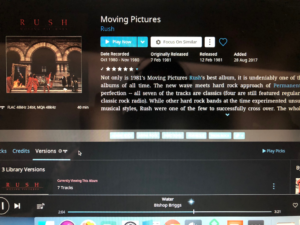
Note the “versions” tab in the lower left hand column, which is much more intuitive than before.
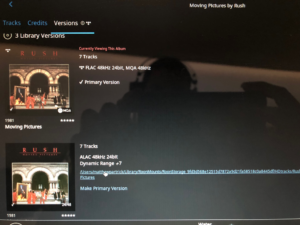
The subsequent screen when one clicks “versions.” Note that the top Rush album is MQA.
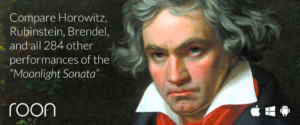
Roon’s now-active ability to actually compare recordings. (BTW no making fun of my speaker placement, I have two toddlers and three giant breed dogs, so things get knocked over easily around here.)
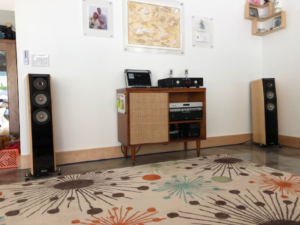
![]()
I have the ongoing pleasure of writing for Mr. Stone, and this is my latest installment about value propositions in the audiophile and guitar market.
![]()
Powered by WordPress & Theme by Anders Norén